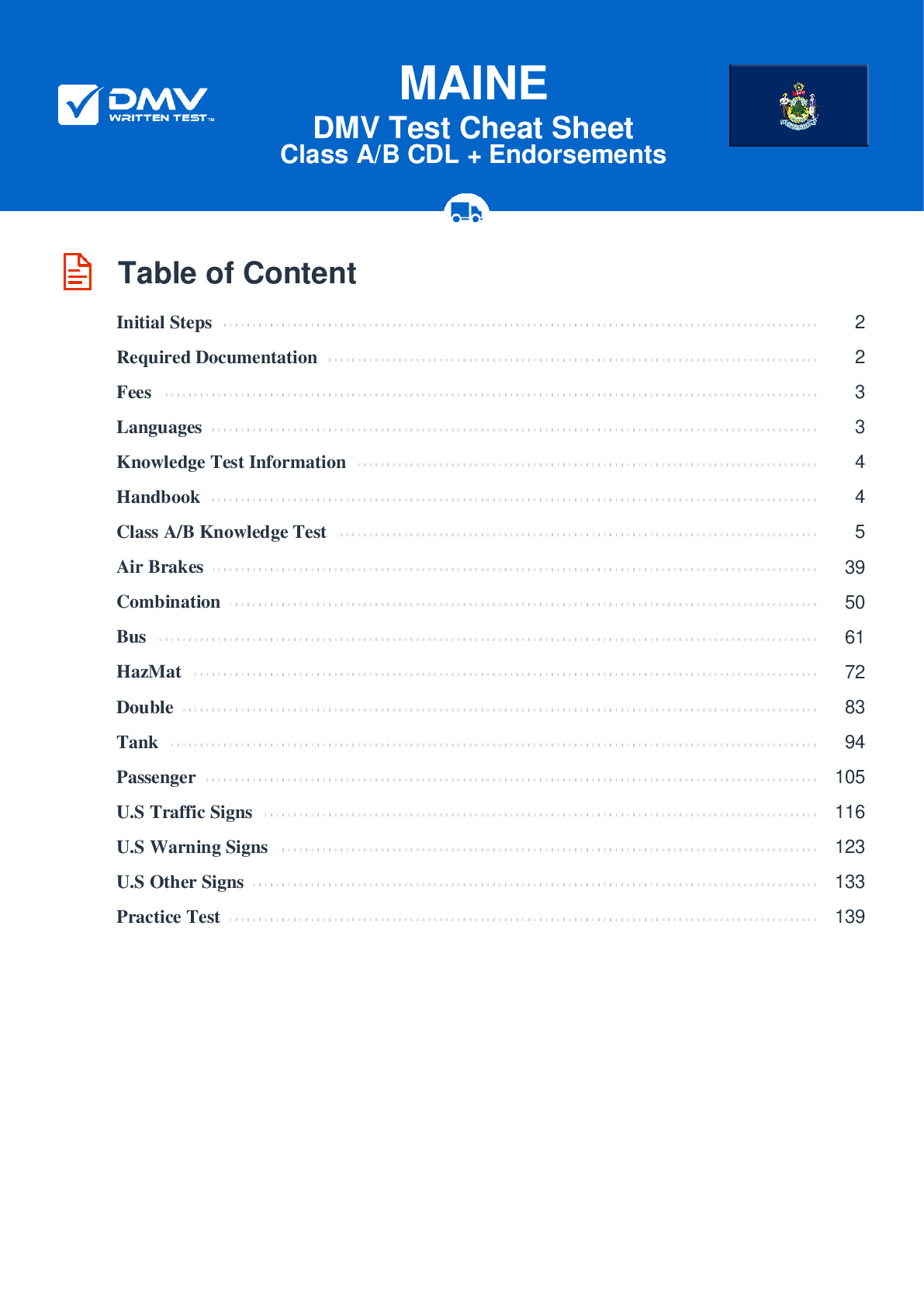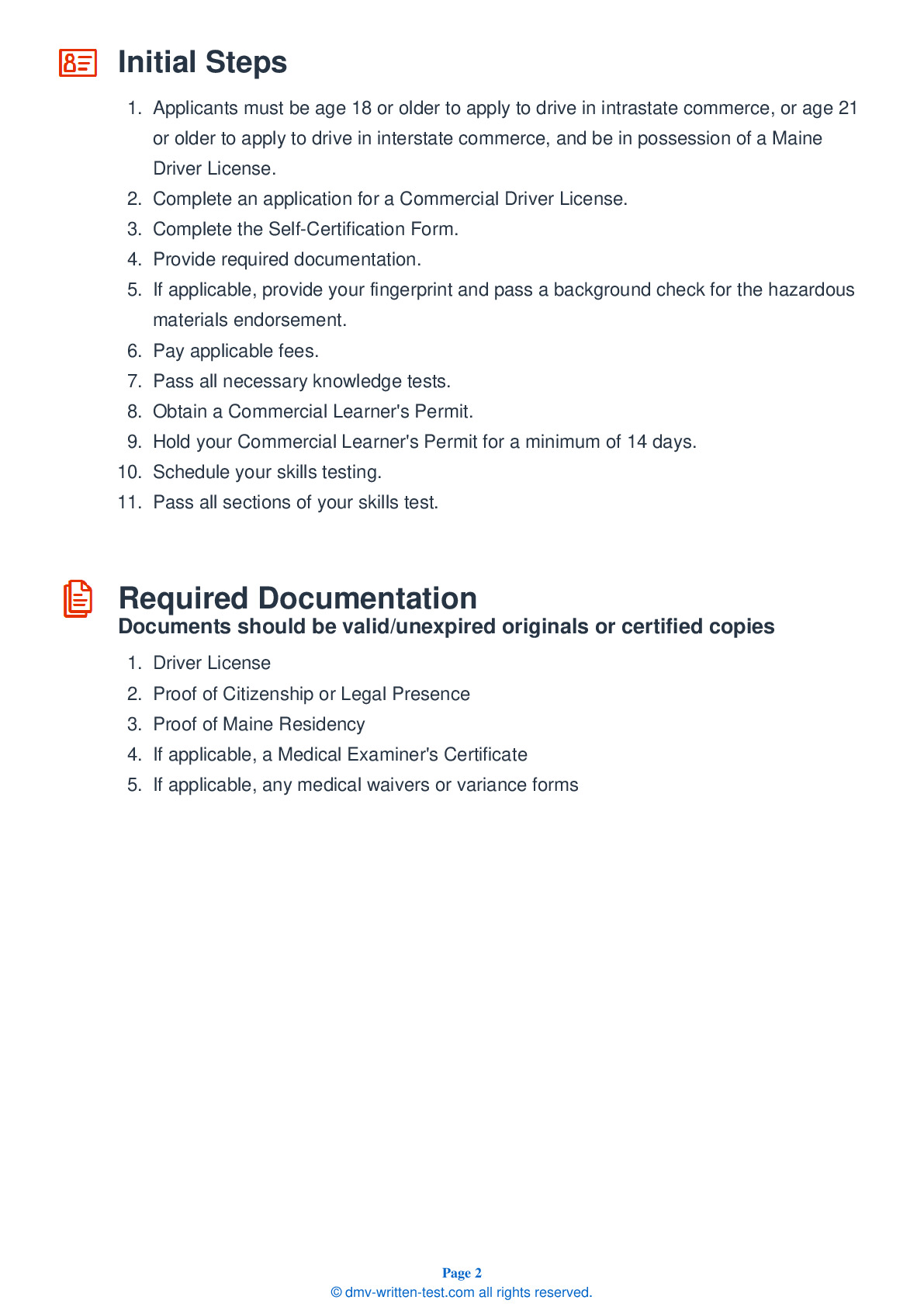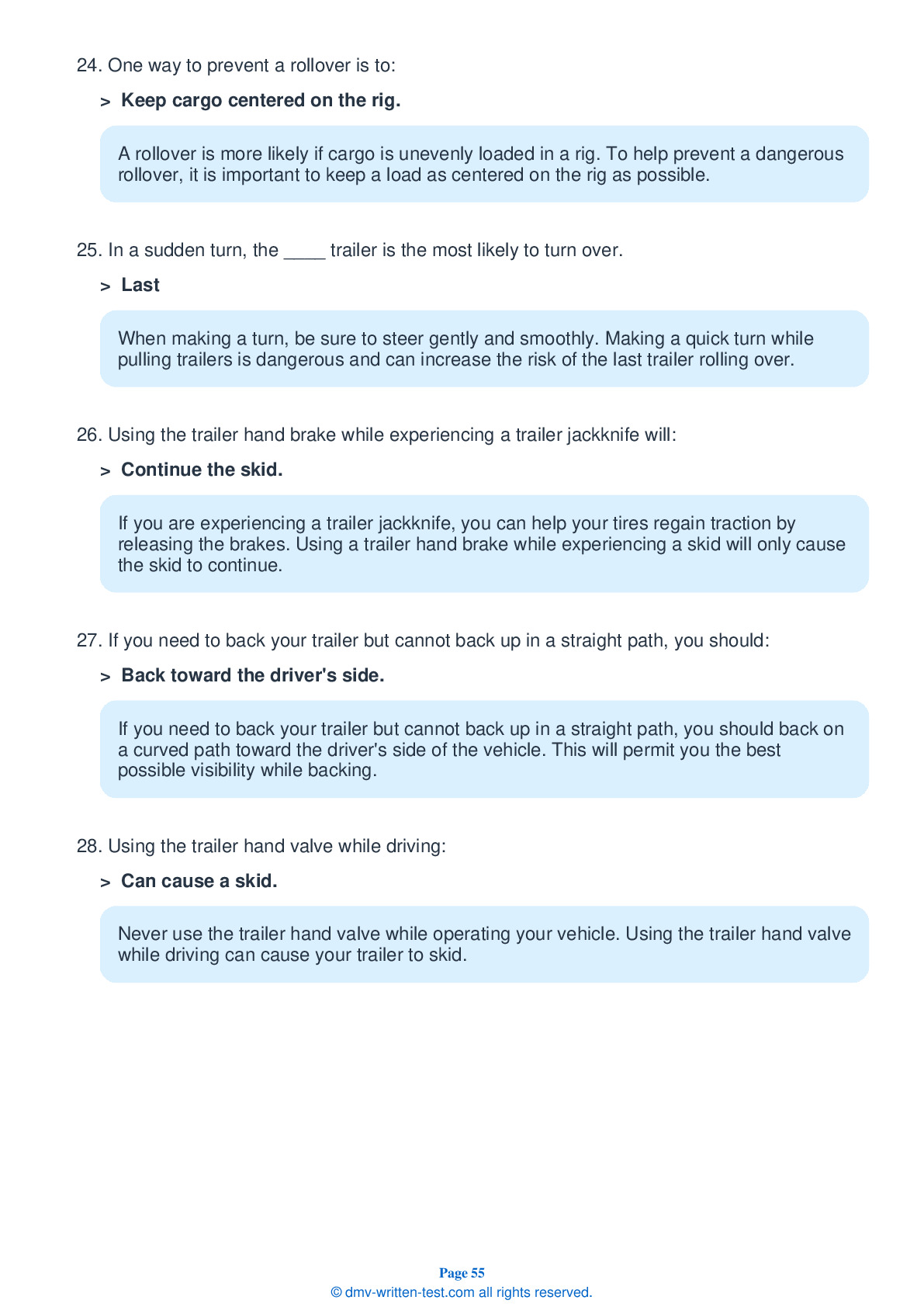Combination
All applicants who are applying for a Class A CDL should be prepared to take the Combination test. This test covers information found in Section 6 of the Commercial Driver License Manual. Section 6 provides the information needed to safely operate tractor-trailers, doubles, triples, and straight trucks with trailers. The test is made up of 20 multiple-choice questions, and applicants will need to correctly answer a minimum of 16 questions to pass. Applicants should answer at a rate of about one question per minute. The Combination test is not a replacement for the Double/Triple endorsement test.
Number of Question
Passing Score
15. Trailers with low underneath clearance can present challenges when driving over:
Explanation
Railroad-highway crossings may be difficult to cross when pulling a trailer with a low underneath clearance. In particular, both low-slung units and single-axle tractors pulling long trailers are especially challenging to drive over raised crossings.
16. If your vehicle gets stuck on railroad tracks, you should:
Explanation
If your vehicle gets stuck on railroad tracks for any reason, you should immediately exit the vehicle and walk away from the tracks. Contact the proper emergency authorities.
17. What is a bobtail tractor?
Explanation
Tractors without semi-trailers are referred to as "bobtail tractors." Bobtail tractors are difficult to operate and drivers must exercise caution.
18. A driver should test the tractor protection valve by:
Explanation
You should test the tractor protection valve by allowing the air supply to properly charge, turning off the engine, then releasing air from the system by pressing the brake pedal several times. The tractor protection valve should move into its emergency position when psi drops to an unsafe level.
19. In an empty combination vehicle, the stiff suspension springs and strong brakes will have:
Explanation
An empty combination vehicle will come to a complete stop more slowly than a fully-loaded vehicle. With less weight in a trailer, the stiff suspension springs and strong brakes will have lower traction than they would if the vehicle carried more weight.
20. Before beginning a trip, you should:
Explanation




